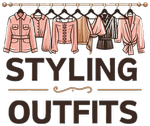Plus fashion has undergone a remarkable transformation in recent years, evolving from an often-overlooked niche to a thriving and influential sector of the fashion industry. This shift reflects a growing recognition of body diversity and a demand for stylish, well-fitting clothing options for individuals of all sizes. In this article, we’ll explore the exciting world of plus fashion, its impact on the industry, and how it’s reshaping beauty standards and self-expression.
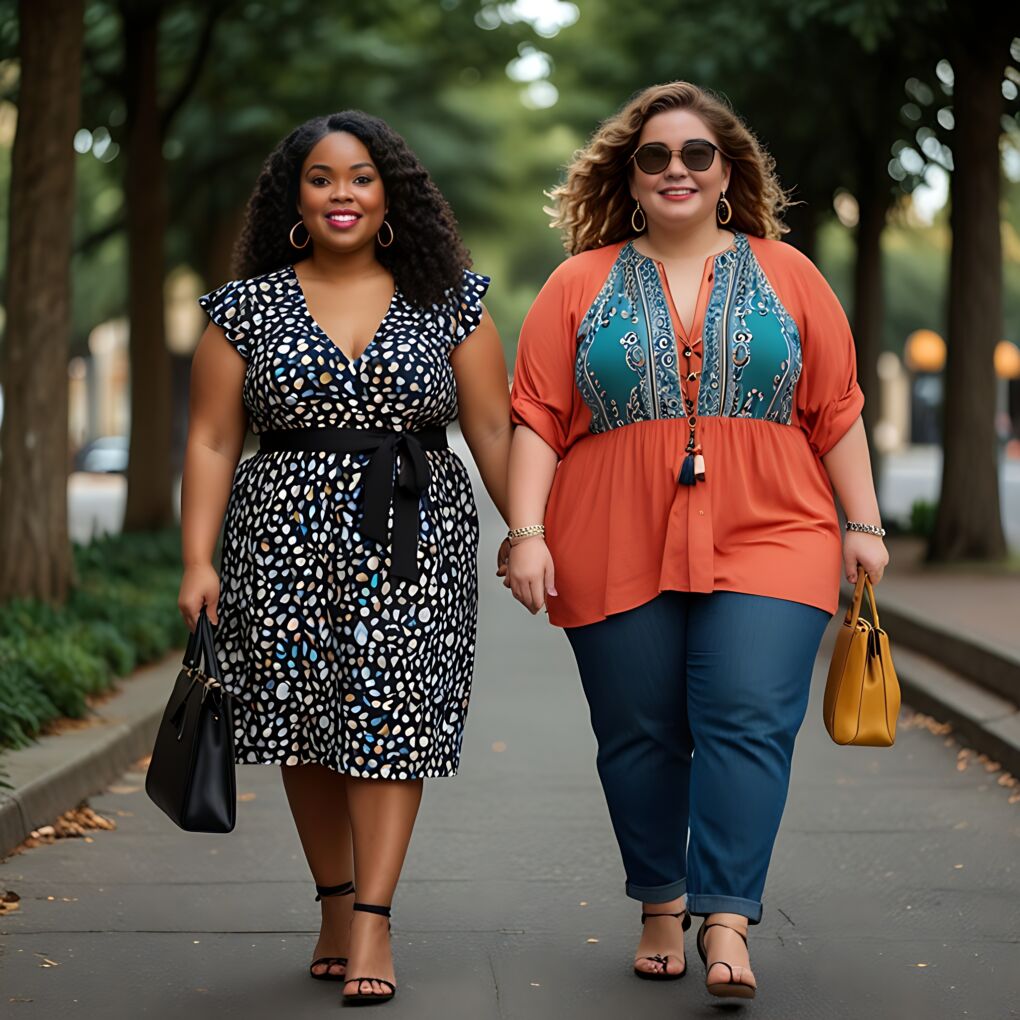
The Evolution of Plus Fashion
The plus-size fashion market has come a long way from its humble beginnings. Once limited to a small selection of poorly fitting, uninspired designs, plus fashion now encompasses a wide range of styles, from haute couture to everyday wear. This evolution has been driven by a combination of factors, including increased representation in media, vocal advocates for body positivity, and a growing understanding of the diverse needs and desires of plus-size consumers.
Today, fashion is no longer an afterthought but a dynamic and innovative sector that’s challenging traditional notions of beauty and style. Designers and brands are recognizing the potential of this market, leading to more inclusive sizing, improved fit techniques, and fashion-forward designs that cater to a wide range of body types and personal tastes.
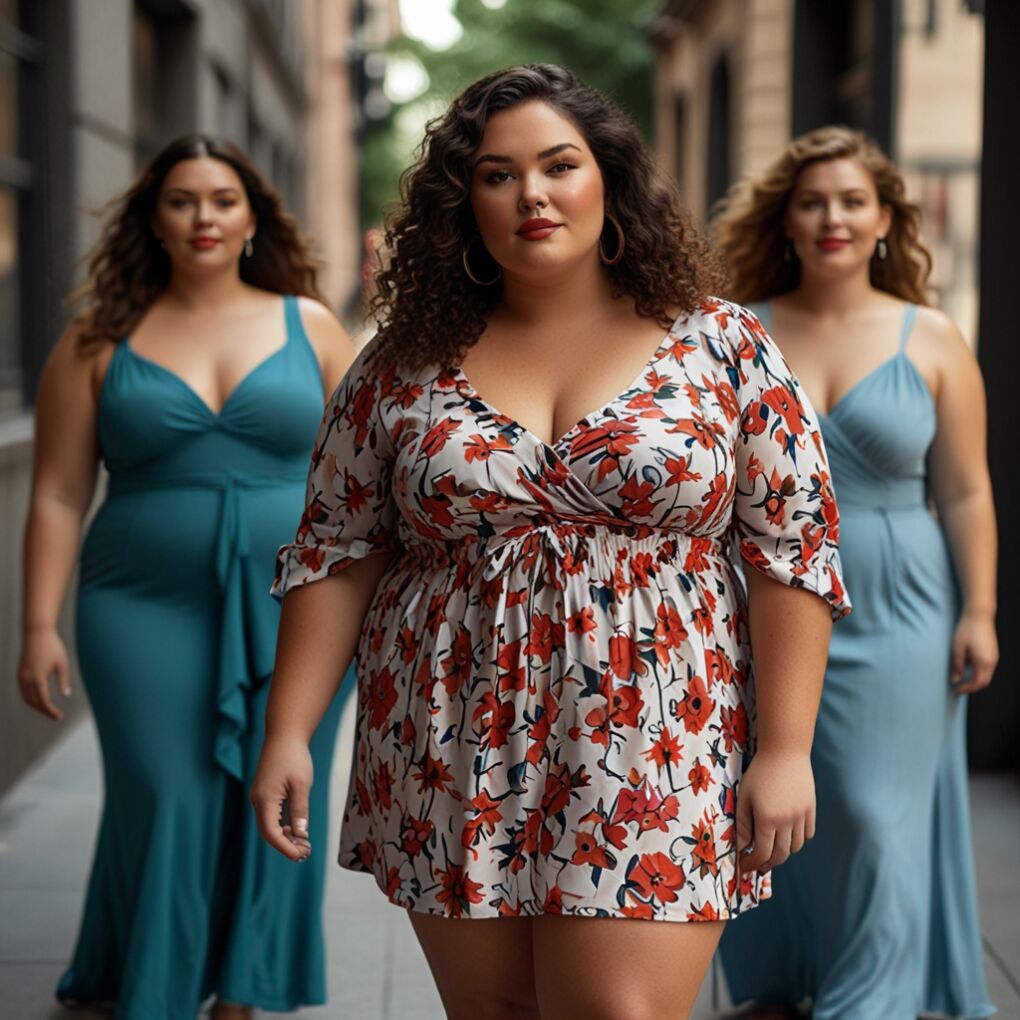
Historical Context
To truly appreciate the evolution of plus fashion, it’s important to understand its historical context:
- 1920s: Lane Bryant introduces the first plus-size clothing line
- 1960s: Plus-size models begin appearing in fashion magazines
- 1980s: The term “plus-size” gains popularity in the fashion industry
- 1990s: Plus-size clothing sections become more common in department stores
- 2000s: Online shopping opens up new opportunities for plus-size consumers
- 2010s: Body positivity movement gains momentum, influencing fashion trends
- The 2020s: Mainstream fashion brands expand into plus sizes and plus-exclusive brands gain popularity
This timeline illustrates the gradual but significant progress made in the plus fashion industry over the past century.
Breaking Down Barriers: Plus Fashion and Body Positivity
The rise of plus fashion is intrinsically linked to the body positivity movement. This powerful social shift has challenged long-standing beauty ideals and promoted acceptance and celebration of all body types. Plus fashion has played a crucial role in this movement by providing individuals with the means to express themselves through clothing, regardless of their size.
“Fashion is not just about clothes, it’s about confidence. When you have beautiful, well-fitting options available in your size, it can be truly transformative.” – Ashley Graham, Model and Body Positivity Advocate
This quote from Ashley Graham encapsulates the empowering nature of plus fashion. By offering stylish, on-trend options in extended sizes, the industry is helping to boost confidence and self-esteem among plus-size individuals, challenging societal stigmas, and promoting a more inclusive vision of beauty.
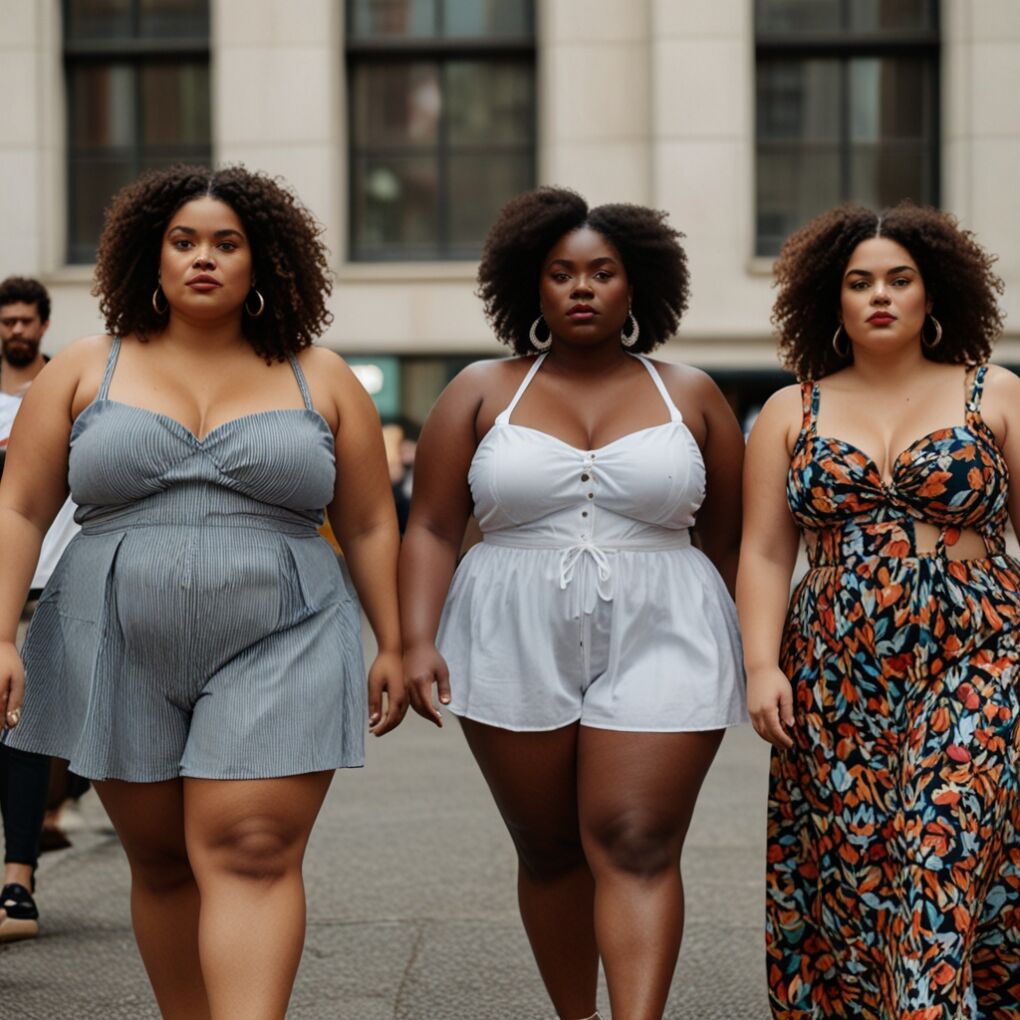
Impact on Mental Health and Self-Esteem
The availability of fashionable plus-size clothing has had a significant positive impact on the mental health and self-esteem of many individuals. Studies have shown that:
- Increased representation in fashion can lead to improved body image
- Access to stylish clothing in one’s size can boost self-confidence
- Participating in fashion can be a form of self-care and self-expression
These benefits underscore the importance of continuing to expand and improve the plus fashion industry.
Key Players in the Plus Fashion Industry
Several brands and designers have been at the forefront of the plus fashion revolution. Here’s an expanded list of notable names:
- Torrid
- Lane Bryant
- Eloquii
- Universal Standard
- Good American
- Ashley Stewart
- City Chic
- Fashion to Figure
- Navabi
- Simply Be
- ASOS Curve
- Dia & Co
- Loud Bodies
- SmartGlamour
- Henning
These brands have not only expanded their size ranges but have also focused on creating fashionable, high-quality clothing that resonates with plus-size consumers. Many have also prioritized diversity in their marketing and runway shows, further promoting inclusivity in the fashion world.
Spotlight on Innovative Plus-Size Brands
Let’s take a closer look at some brands that are pushing the boundaries of plus fashion:
Universal Standard: Known for its size-inclusive approach (00-40), Universal Standard offers minimalist, high-quality basics and workwear. Their innovative Fit Liberty program allows customers to exchange items if their size changes within a year of purchase.
Loud Bodies: This sustainable and ethical brand offers sizes XXS-10XL, with a focus on romantic, feminine styles. They’re known for their transparent pricing and production practices.
SmartGlamour: A customizable clothing brand that offers sizes XXS-15X and beyond. Customers can input their own measurements for a perfect fit, and the brand is known for its diverse representation in marketing.
Innovations in Plus Fashion Design
The growth of plus fashion has spurred numerous innovations in design and manufacturing. Designers are now employing advanced fit techniques and considering the unique needs of plus-size bodies when creating garments. This has led to improvements in areas such as:
- Pattern grading
- Fabric selection
- Strategic seam placement
- Adjustable features for a customized fit
Additionally, many brands are embracing technology to enhance the shopping experience for plus-size consumers. Virtual fitting rooms, 3D body scanning, and AI-powered size recommendation tools are just a few examples of how technology is being leveraged to improve fit and reduce returns in plus fashion.
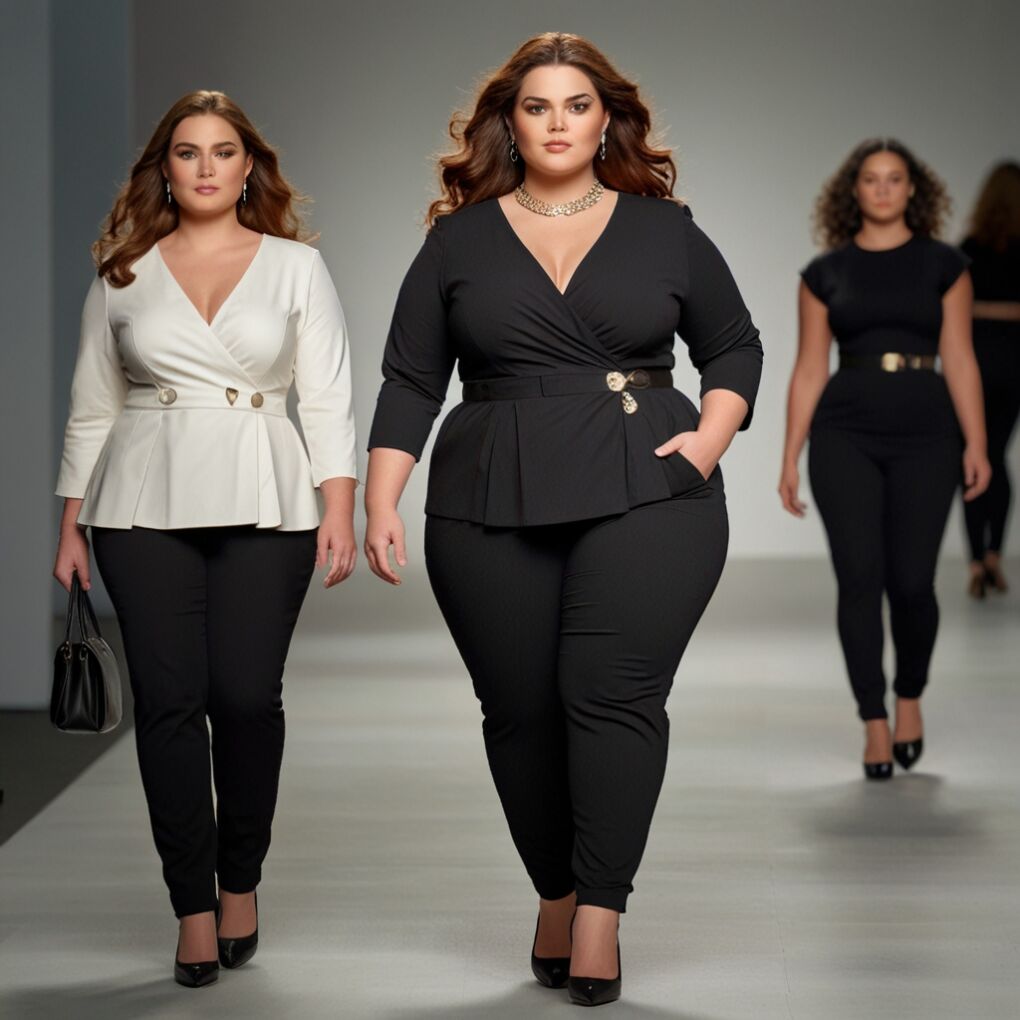
Advanced Fit Techniques
Some specific innovations in plus-size fit include:
- Contoured waistbands: These are designed to prevent gaping at the back of pants and skirts.
- Graduated hemlines: Slightly longer in the back or sides to ensure even coverage.
- Reinforced seams: To prevent splitting in high-stress areas.
- Stretch panels: Strategically placed for comfort and movement.
- Power mesh lining: Provides smoothing and support without constriction.
Pro Tip: When shopping for plus-size clothing, pay attention to these fit features. They can make a significant difference in how well a garment fits and feels.
The Economic Impact of Plus Fashion
The plus-size market represents a significant economic opportunity for the fashion industry. To illustrate this, let’s look at some key statistics:
| Year | Global Plus-Size Market Value | Annual Growth Rate |
|---|---|---|
| 2019 | $178 billion | 4.3% |
| 2020 | $194 billion | 9.0% |
| 2021 | $211 billion | 8.8% |
| 2022 | $230 billion (projected) | 9.0% |
| 2023 | $251 billion (projected) | 9.1% |
| 2024 | $274 billion (projected) | 9.2% |
| 2025 | $299 billion (projected) | 9.1% |
These figures demonstrate the robust growth of the plus fashion sector, outpacing many other segments of the fashion industry. This economic potential has attracted both established fashion houses and new, plus-focused brands to the market, driving competition and innovation.
Regional Market Analysis
The growth of plus fashion isn’t uniform across all regions. Here’s a breakdown of key markets:
- North America: The most mature market, with a high level of brand awareness and consumer demand.
- Europe: Growing rapidly, with the UK leading in terms of market size and innovation.
- Asia-Pacific: An emerging market with significant potential, particularly in countries like China and India.
- Latin America: Showing steady growth, with a strong preference for body-positive messaging.
Understanding these regional differences is crucial for brands looking to expand globally in the plus fashion market.
Challenges and Opportunities in Plus Fashion
While the plus fashion industry has made significant strides, it still faces several challenges:
- Consistency in sizing across brands
- Availability of luxury and designer options in extended sizes
- Representation in high-fashion runway shows and editorials
- Expansion of sustainable and eco-friendly plus-size options
- Addressing the unique fit needs of diverse body shapes within the plus-size range
- Overcoming societal stigmas and misconceptions about plus-size fashion
- Balancing style with comfort and functionality
However, these challenges also present opportunities for growth and innovation. Brands that can successfully address these issues stand to gain a significant competitive advantage in the expanding plus fashion market.
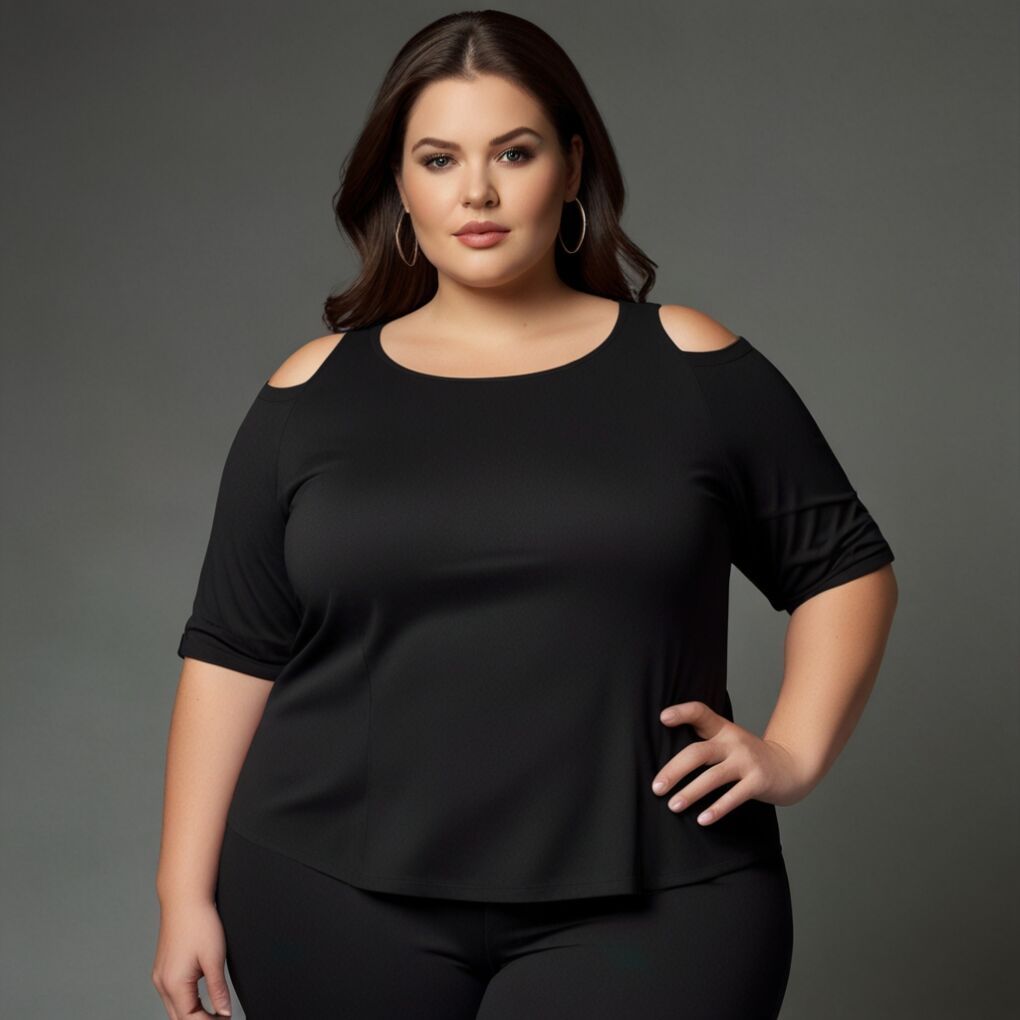
Innovative Solutions
Some brands are already tackling these challenges head-on:
- Universal Standard has introduced a revolutionary sizing system called “Fit Liberty,” which allows customers to exchange their clothing for a different size if their body changes within a year of purchase.
- 11 Honoré collaborates with luxury designers to offer their collections in extended sizes, bringing high-end fashion to the plus-size market.
- Good American uses a diverse range of fit models to ensure their clothing looks great on various body types within the plus-size spectrum.
Pro Tip: When shopping for plus-size clothing, don’t be afraid to provide feedback to brands about fit issues or style preferences. Many brands are eager to improve and value customer input.
The Future of Plus Fashion
As we look to the future, several trends are likely to shape the plus fashion landscape:
- Increased use of AI and machine learning in design and fit optimization
- Greater integration of plus sizes into mainstream fashion lines
- Rise of size-inclusive sustainable and ethical fashion brands
- Expansion of gender-neutral and adaptive clothing options in plus sizes
- The growing influence of plus-size fashion influencers and content creators
- Personalized fashion experiences through advanced tech solutions
- Increased focus on inclusive sizing in activewear and swimwear
- Development of new, innovative fabrics designed for plus-size comfort and style
These trends suggest a future where plus fashion is fully integrated into the broader fashion industry, offering the same level of style, quality, and innovation as straight-size fashion.
Emerging Technologies in Plus Fashion
Several cutting-edge technologies are set to revolutionize the plus fashion industry:
- 3D Knitting: This technology allows for the creation of seamless garments custom-fitted to individual body measurements.
- Body Scanning Apps: Smartphone apps that use AR to take accurate body measurements, improving online shopping experiences.
- AI-Powered Personal Styling: Algorithms that learn individual preferences and body types to provide personalized style recommendations.
- Sustainable Fabric Innovations: Development of eco-friendly materials that offer comfort and durability for plus-size garments.
Celebrating Diversity: Plus Fashion on the Runway
One of the most visible signs of progress in plus fashion has been its increasing presence on the runway. Major fashion weeks around the world are gradually becoming more inclusive, featuring plus-size models and designers who specialize in extended sizes. This representation is crucial not only for visibility but also for inspiring the next generation of fashion designers to consider diverse body types in their creations.
Notable events like The Curvy Con, which coincides with New York Fashion Week, have also emerged as important platforms for showcasing plus fashion. These events bring together designers, retailers, and consumers to celebrate style at every size and further legitimize plus fashion within the industry.
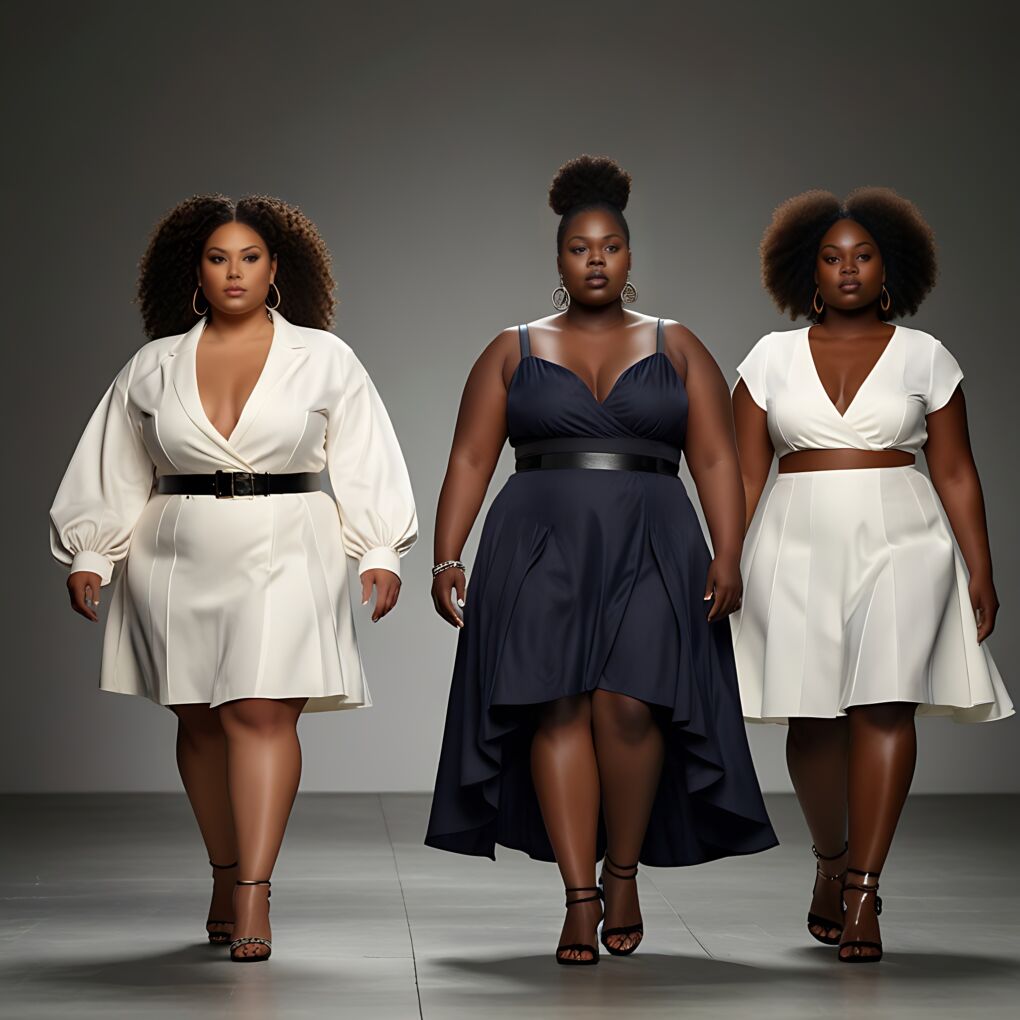
Groundbreaking Runway Moments
Some significant milestones in plus fashion runway representation include:
- 2017: Michael Kors features Ashley Graham in his NYFW show
- 2018: Rihanna’s Savage X Fenty show features a diverse cast of models
- 2019: Chromat’s NYFW show celebrates body diversity with models of all sizes
- 2020: Versace features its first plus-size models on the Milan Fashion Week runway
- 2021: Precious Lee becomes the first Black curve model to open a Moschino show
These moments represent important steps towards normalizing body diversity in high fashion.
The Role of Social Media in Plus Fashion
Social media has played a pivotal role in the growth of plus fashion. Platforms like Instagram, TikTok, and YouTube have given plus-size individuals a space to share their style, build communities, and demand better representation from brands. Hashtags like #PlusSize, #BodyPositive, and #FatshionBlogger have millions of posts, creating a vibrant online ecosystem for plus fashion enthusiasts.
“Social media has been a game-changer for plus-size visibility. It’s allowed us to create our own representation and show the world that fashion has no size limit.” – Gabi Gregg, Fashion Blogger and Designer
This online visibility has not only empowered consumers but has also provided valuable insights for brands, helping them better understand and cater to the plus-size market.
Influential Plus-Size Fashion Accounts
Here are some popular social media accounts that are shaping the plus fashion landscape:
- @gabifresh – Gabi Gregg, fashion blogger and designer
- @nicolettemason – Nicolette Mason, writer and consultant
- @ashleygraham – Ashley Graham, model and body positivity advocate
- @tessholliday – Tess Holliday, model and author
- @StyleAndCurve – Plus-size fashion inspiration account
Pro Tip: Following diverse plus-size fashion accounts can provide inspiration for styling and help you discover new brands that cater to your body type and personal style.
Inclusive Sizing: Beyond Plus Fashion
The success of Plus Fashion has sparked a broader conversation about inclusive sizing across the fashion industry. Many brands are now adopting extended size ranges that cater to a wider spectrum of body types, from petite to plus and everything in between. This approach, often referred to as “size-inclusive” fashion, aims to provide stylish options for all consumers, regardless of their size.
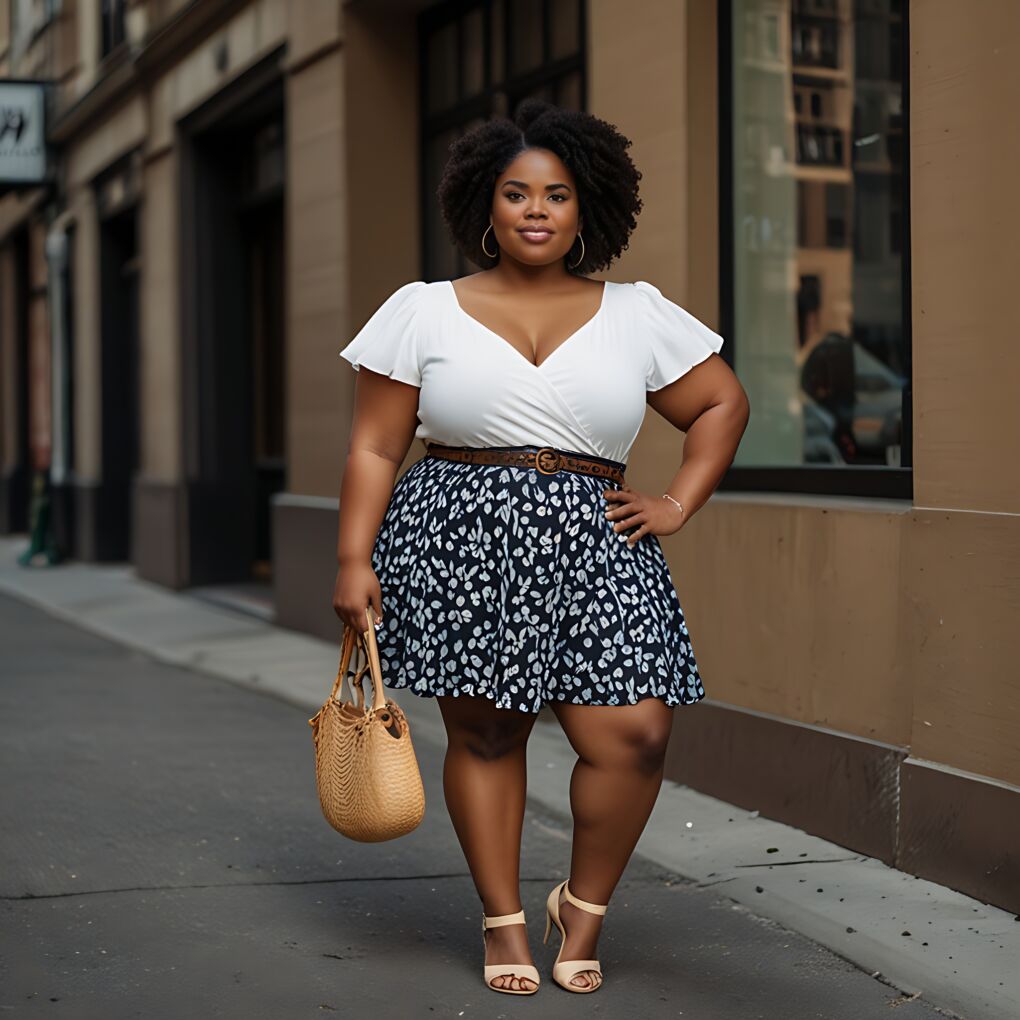
Some key aspects of size-inclusive fashion include:
- Offering a continuous size range (e.g., 00-40) rather than separate plus lines
- Using diverse models to showcase how garments look on different body types
- Providing detailed size guides and fit information
- Designing clothes that can adapt to body fluctuations
By embracing inclusive sizing, brands can tap into a larger market while promoting a more inclusive and diverse vision of fashion.
Size-Inclusive Brands to Watch
Here are some brands that are leading the way in size-inclusive fashion:
- Universal Standard: Offers sizes 00-40 in all styles
- Girlfriend Collective: Activewear brand with sizes XXS-6XL
- Wray: Independent designer offering sizes XXS-6XL
- Reformation: Expanded their size range to 0-24
- Old Navy: Offers all women’s styles in sizes 0-30 and XS-4X
Pro Tip: When shopping from size-inclusive brands, pay attention to how they showcase their clothing on different body types. This can give you a better idea of how the garments might look on you.
Sustainable Plus Fashion: A Growing Trend
As sustainability becomes an increasingly important concern in the fashion industry, plus-size consumers are also seeking eco-friendly options. This has led to the emergence of sustainable fashion brands and initiatives. These companies are focusing on:
- Using recycled and organic materials
- Implementing ethical manufacturing practices
- Designing versatile, long-lasting garments
- Offering repair and recycling programs
While sustainable plus fashion is still a relatively small sector, it’s growing rapidly as consumers become more environmentally conscious. This trend presents an exciting opportunity for innovation in both design and manufacturing processes.
Sustainable Plus-Size Brands
Here are some brands combining plus sizes with sustainable practices:
- Loud Bodies: Ethical production, sizes XXS-10XL
- Christy Dawn: Extended sizes in sustainable dresses
- Hackwith Design House: Made-to-order plus-size pieces
- Tamara Malas: Size-inclusive, locally-produced fashion
- Ori: Sustainable basics in sizes 10-32
Pro Tip: When shopping for sustainable plus-size fashion, look for brands that are transparent about their production processes and materials. This information is often available on their websites or through direct inquiry.
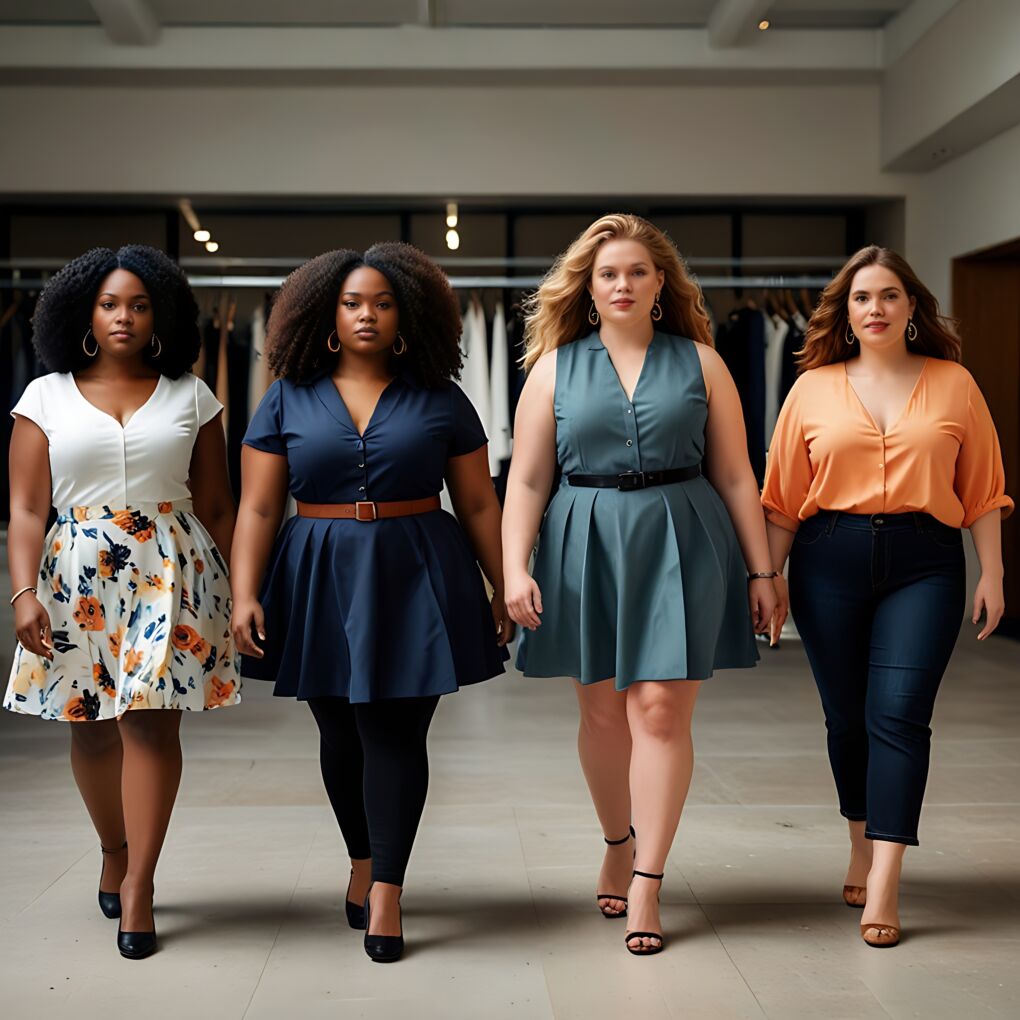
The Intersection of Technology and Plus Fashion
Technology is playing an increasingly important role in shaping the future of plus fashion. From improving fit to enhancing the shopping experience, tech innovations are helping to address many of the challenges faced by plus-size consumers. Some key technological advancements in plus fashion include:
- 3D body scanning for accurate measurements
- Virtual try-on experiences
- AI-powered personalized styling recommendations
- On-demand manufacturing to reduce waste
- Blockchain technology for supply chain transparency
These technologies not only improve the shopping experience for consumers but also help brands reduce returns, minimize waste, and better understand their customers’ needs.
Innovative Tech Solutions in Plus Fashion
Let’s explore some specific examples of how technology is revolutionizing fashion:
- MySize ID: An app that uses smartphone sensors to take accurate body measurements, helping users find the right size when shopping online.
- Zeekit: A virtual fitting room technology that allows shoppers to see how clothes will look on their body type.
- Lectra: Offers 3D prototyping software that helps designers create better-fitting plus-size garments.
- Gewirtz & Gewirtz: Developed an advanced grading system specifically for plus sizes, ensuring better fit across a range of sizes.
Pro Tip: When shopping online, look for retailers that offer virtual try-on features or detailed fit information based on your body measurements. These tools can significantly improve your chances of finding well-fitting clothes without having to try them on physically.
The Global Perspective: Plus Fashion Around the World
While the plus fashion revolution has gained significant momentum in Western countries, it’s important to recognize that body ideals and fashion norms vary greatly across cultures. This diversity presents both challenges and opportunities for the global fashion industry.
Regional Variations in Plus Fashion
- United States: Leads in plus-size market size and innovation
- United Kingdom: Strong presence of plus-size high-street brands
- Brazil: Embraces curvy figures, with a thriving plus-size fashion week
- Middle East: Growing market for modest plus-size fashion
- Japan: Emerging plus-size market, still facing societal stigma
- India: Increasing demand for plus-size traditional and fusion wear
Understanding these regional differences is crucial for brands looking to expand globally and for consumers seeking diverse style options.
Pro Tip: When traveling, research local plus-size brands at your destination. You might discover unique styles and fits that aren’t available in your home country.
The Influence of Plus-Size Celebrities and Influencers
Celebrities and social media influencers have played a significant role in changing perceptions about plus-size fashion and promoting body positivity. Their visibility and style choices have encouraged brands to expand their size ranges and have given plus-size individuals more confidence to express themselves through fashion.
Notable Plus-Size Fashion Icons
- Lizzo: Known for her bold, unapologetic style
- Rebel Wilson: Showcases versatile, sophisticated looks
- Chrissy Metz: Champions size inclusivity in Hollywood
- Barbie Ferreira: Represents Gen Z plus-size style
- Billy Porter: Challenges gender norms in plus-size fashion
These individuals not only inspire their fans but also collaborate with brands to create inclusive fashion lines and promote body positivity.
Plus-Size Menswear: An Emerging Market
While much of the focus in plus fashion has been on womenswear, the plus-size menswear market is also growing rapidly. This sector faces unique challenges and opportunities:
Challenges in Plus-Size Menswear
- Limited style options beyond basics
- Lack of representation in marketing and media
- The stigma around men’s body image issues
Opportunities in Plus-Size Menswear
- Growing demand for fashionable, well-fitting clothing
- Potential for innovative fit solutions
- Increased representation in marketing campaigns
Notable Plus-Size Menswear Brands
- DXL: Offers a wide range of sizes and styles
- ASOS Plus: Trendy options for younger consumers
- Johnny Bigg: Australian brand specializing in plus-size menswear
- Bonobos Extended Sizes: Known for their well-fitting pants
- MVP Collections: Founded by former NFL player Mo Vaughn
Pro Tip: Men shopping for plus-size clothing should pay attention to shoulder fit and sleeve length, as these can be challenging areas in larger sizes.
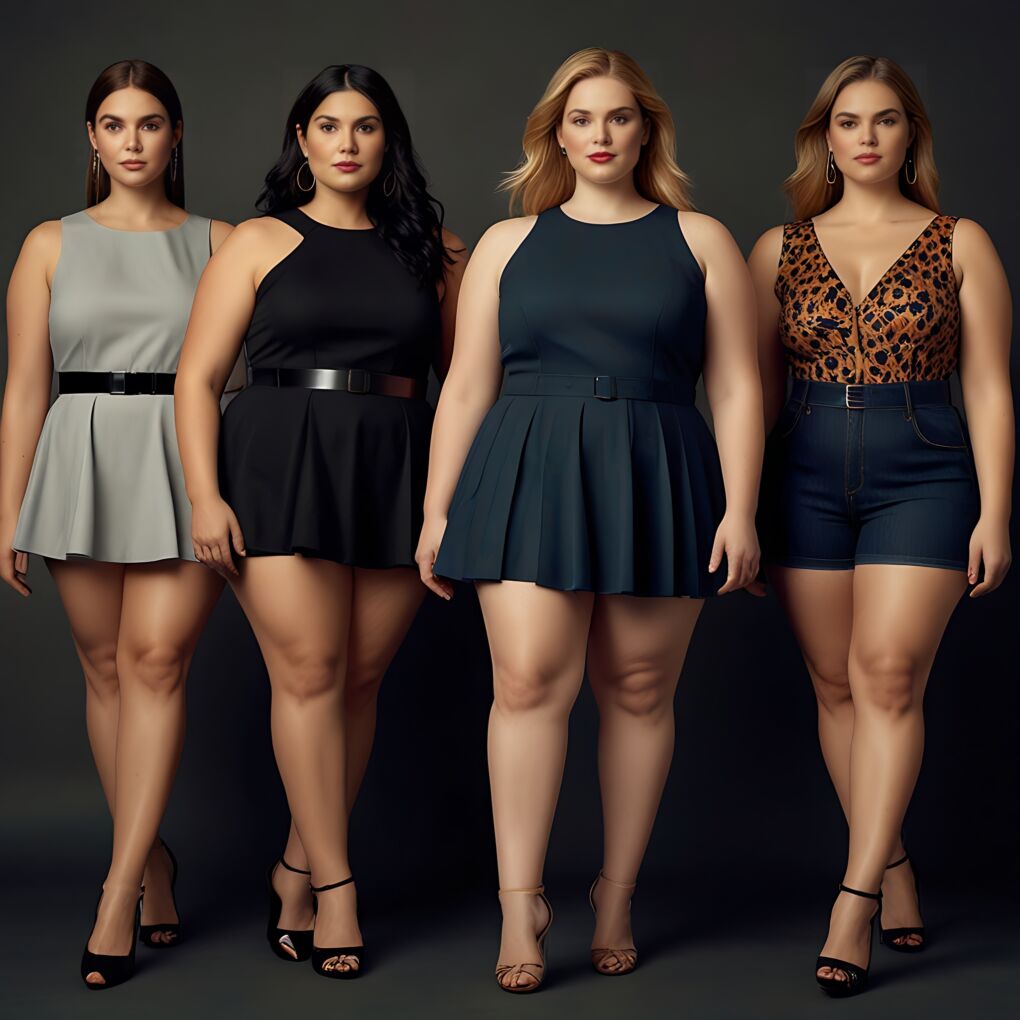
The Role of Education in Plus Fashion
As the plus fashion industry grows, there’s an increasing need for education both within the industry and for consumers. This includes:
- Training fashion designers in plus-size pattern making and grading
- Educating retailers on the needs and preferences of plus-size consumers
- Helping consumers understand fit, styling, and body positivity
Several initiatives are addressing this need:
- The Fashion Institute of Technology offers an “Inclusive Design” course
- The Plus-Size Industry Professionals Association provides resources and networking
- Many plus-size bloggers and influencers create educational content on styling and body acceptance
Adaptive Fashion and Plus Sizes
An emerging area of interest is the intersection of plus-size and adaptive fashion. Adaptive fashion refers to clothing designed for individuals with disabilities or mobility issues. Many plus-size individuals also benefit from adaptive features, leading to innovations such as:
- Magnetic closures for easier dressing
- Adjustable waistbands and hemlines
- Sensory-friendly fabrics
- Seated-wear designs for wheelchair users
Brands like Tommy Hilfiger Adaptive and IZ Adaptive are leading the way in this space, offering stylish options that cater to a wide range of body types and abilities.
The Psychology of Plus Fashion
The availability of fashionable plus-size clothing has significant psychological implications. Studies have shown that:
- Access to stylish clothing in one’s size can boost self-esteem and body image
- Representation in fashion can lead to greater self-acceptance
- The act of dressing in appealing clothing can improve mood and confidence
This underscores the importance of continued growth and innovation in the plus fashion industry, as it has far-reaching effects beyond just clothing.
Conclusion: Embracing Style at Every Size
The rise of plus fashion represents a significant shift in the fashion industry towards greater inclusivity and diversity. By recognizing and catering to the style needs of plus-size individuals, the industry is not only tapping into a lucrative market but also promoting a more inclusive vision of beauty and self-expression.
As plus fashion continues to evolve, we can expect to see even more innovation, representation, and integration within the broader fashion landscape. This growth will likely lead to a future where “plus fashion” is no longer a separate category, but simply part of a diverse and inclusive fashion industry that truly caters to all.
The journey of Plus Fashion from a marginalized niche to a thriving sector of the industry serves as a powerful reminder of the importance of representation and inclusivity. As we move forward, it’s crucial that we continue to champion diversity in all its forms, ensuring that fashion remains a powerful tool for self-expression and empowerment for individuals of all size
